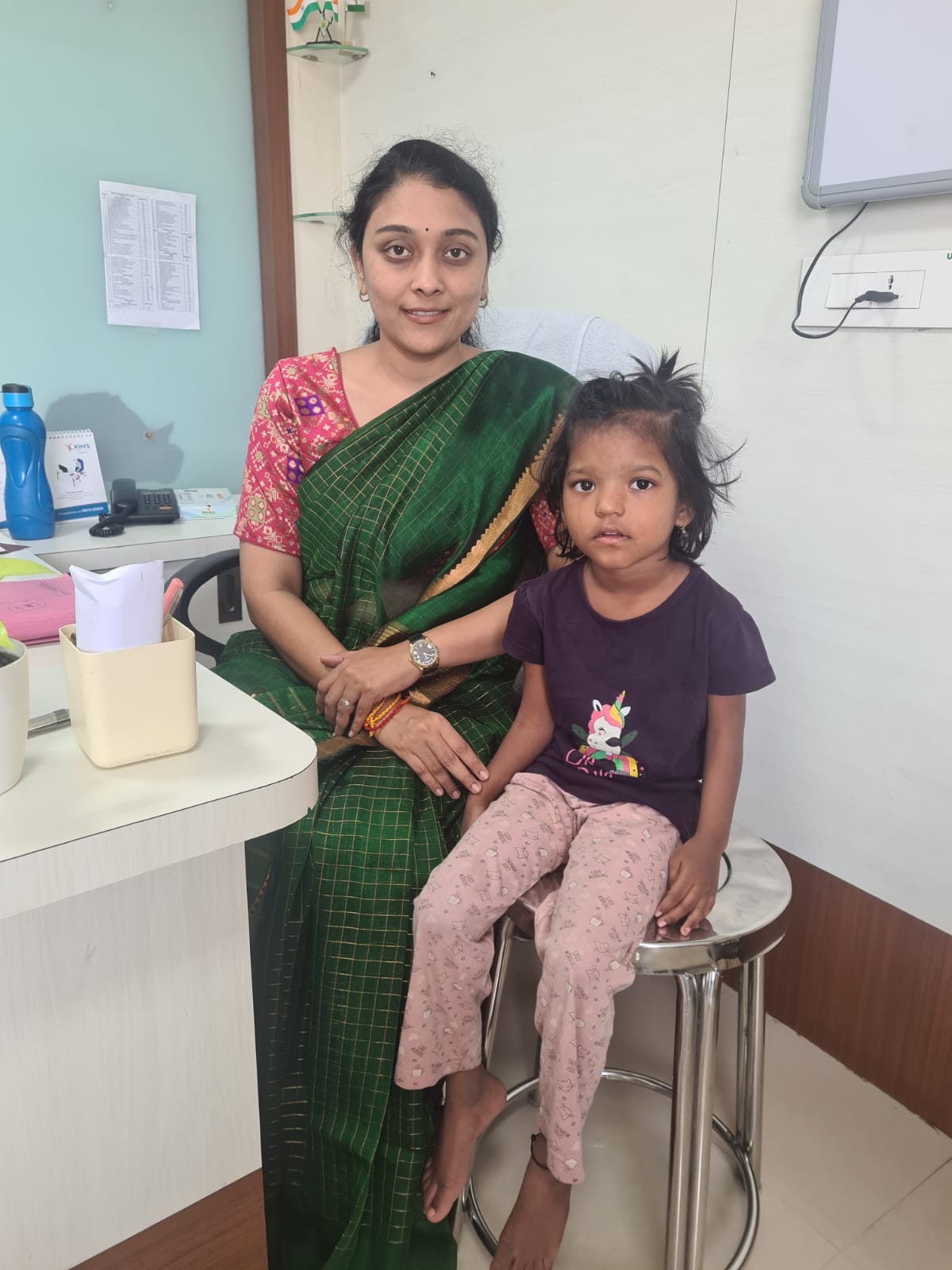A 5-year-old gets Absence Seizures, a rare problem
80-100 episodes per day * Parents identified with normal seizures * 5-10 children in 1 lakh get this rare issue * Kurnool KIMS doctors treat freely under Aarogyasree * Severe problem, if not identified on time Have you ever noticed

80-100 episodes per day
* Parents identified with normal seizures
* 5-10 children in 1 lakh get this rare issue
* Kurnool KIMS doctors treat freely under Aarogyasree
* Severe problem, if not identified on time
Have you ever noticed your child staring without responding or daydreaming during activities? This could be a sign of Absence Seizures, which isn’t a common occurrence. As a parent, it’s important to respond immediately by taking your child to the best medical center. Pranika, a 5-year-old girl from Banaganapalli in the Nandyal district, experienced this issue. Her parents took her to Kurnool KIMS Hospital because she was having seizures 5 to 8 times per day for 2 weeks. These seizures were characterized by a brief staring episode with facial twitching and eye blinking. Dr. Swetha Rampally, a Pediatric Neurologist, examined and treated the baby in the Aarogyasree scheme completely free, and explained the details of her condition.
A young girl named Pranika, whose parents were farmers named K. Venkataramudu and M. Venkateswaramma, was experiencing seizures. They brought her to our hospital seeking help. However, they also mentioned that she would often stare, her face would twitch, and her eyes would blink for a few moments. After conducting a thorough 3-hour Video EEG evaluation, we discovered that the child had been experiencing multiple seizures in various forms that had gone unnoticed. These included Absence Seizures (staring spells) and nonconvulsive status (seizures that only occur in the brain). Shockingly, there were around 80 to 100 episodes per day that the parents were not able to detect.
We have admitted the baby to the hospital. Her brain MRI was normal. Special tests including CSF analysis (spine fluid), blood and urine metabolic tests, and genetic tests were done which were inconclusive. As a part of treatment, she was admitted for about 2 weeks in the hospital. She was treated with escalating doses of multiple anti-seizure medications. During treatment, she had breakthrough convulsions which were managed appropriately. Diet therapy (Modified Atkins diet) was initiated under the supervision of the Dietician. She was given low-carbohydrate, high-fat foods. That was prepared according to the child’s weight and blood test results. The food was tested for tolerance too. Eventually child responded to the treatment and it took about 10 days for the seizures to abort. As the parents were farmers, we have provided the entire treatment free under the Aarogyasree Scheme. She suffered from “a rare generalized epilepsy syndrome with frequent absences”. We prescribed four types of medicines and diet therapy. She was advised for monthly follow-ups for some time. If she doesn’t get either normal or absence seizures, the parents can bring her every quarter.”
What is this Absence Seizure?
It can be difficult for parents to notice when their child experiences an absence seizure, which is a brief loss of awareness caused by abnormal electrical activity in the brain. This condition is quite rare, affecting only 5-10 children per 100,000. Furthermore, this particular variant is one of the rarest types. Due to the rapid and sudden nature of these seizures, they can be mistaken for daydreaming by observers. Accurate diagnosis can be achieved through a detailed EEG test, which typically lasts between 3 to 8 hours. Absence seizures are typically seen in children aged 4 to 14 and can be a part of either benign epilepsy or a more serious form of epilepsy. However, a major concern with this type of epilepsy is a delay in diagnosis. During a seizure, the child may suddenly stop talking or moving, appearing confused or pausing. These seizures can disrupt normal brain function and lead to serious epilepsy, behavioral changes, sleep disturbances, academic difficulties, and accidents. Therefore, early diagnosis and management of absence seizures are crucial to prevent potential complications, according to Dr. Swetha Rampally.
My daughter got a second life
“We took our daughter Pranika to KIMS Hospital, Kurnool immediately after noticing seizures. She shouted in the early hours a day before. But we thought that she might have had some bad dreams. She had seizures some eight months back too. Then, it was treated in OP at KIMS Kurnool. Now, our baby was just staring, because of which we were frightened a lot. Dr. Swetha, other doctors, Dieticians, Nurses, and the management of KIMS Hospital all took excellent care of our child. They explained us in detail. We are very thankful to Dr. Swetha, and other doctors who gave second life to our daughter:” – Venkata Ramudu, F/o Pranika






